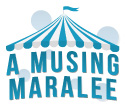I remember being about nine years old the first time I realized my family culture was different from the culture I was growing up in. My mom had bought a boxed set of cassette tapes of “The News from Lake Wobegon” from a library book sale. As I listened to Garrison Keillor describe life in the midwest, my life started to make just a little more sense. I was a girl growing up in California being raised by a mother from Iowa and a father with Germans from Russia Mennonite ancestry. The attitudes and customs I heard described on those cassettes resonated and connected me back to culture I didn’t even know I was missing.
I now live in the midwest and I’ve heard it said that news anchors are taught to speak like they come from around here because we are people with no describable accent. We don’t sound like we’re from any particular place and I think sometimes we feel like that about our culture too. We have none. We are the default. We’re just “normal.” Nothing special to be noticed or embraced.
Which, of course, is a very big part of our culture and our attitude about life. Being normal, being humble, is a very high value.
When we adopted kids who came from different cultures, I wanted to help them embrace cultural traditions they would have grown up with, but were unfamiliar to me. This is a delicate dance when you want to do it respectfully, thoughtfully, intentionally. It’s meant signing our daughter up for Mexican dance class, learning West African recipes, and buying books about important Lakota leaders so we can learn the stories. The more we’ve worked to incorporate their histories, the more I’ve found myself looking for ways to embrace my own. Which is why I started making New Year’s cookies.
I can remember my grandma and my aunts making them when I was that young girl in California, but they were part of my dad’s Mennonite family traditions. My mom never made them. When we moved away, I never had them again until a few years ago, when I decided to learn how to make them myself. When I’m dropping that dough into the hot oil, I feel connected to my aunts and cousins who are doing the same thing that morning. I feel tied to the grandmas and great aunts who came before me and enjoyed making these same cookies for their families. . . or if they didn’t exactly “enjoy” it, felt compelled by duty– another important part of my family culture.
If we want our kids to respect other people’s cultures and traditions, it starts in our home. It starts by identifying those parts of our family history that are special and unique. It means learning the roots of our own traditions and owning them, not just participating in them by default or because it’s what we’ve always done. It means incorporating new traditions that have meaning for our family and articulating why we’re choosing these things. When we start to see a complete picture of our own cultural heritage and of the family culture we’re creating, it is a good starting point for teaching our kids the value of someone else’s traditions.
We all have a culture we’re part of, even if we don’t recognize it. When you were born into a culture, raised in that same culture and never left, it can be hard to identify the elements that make it unique. Spending my young adulthood in the south helped me learn a love and appreciation for aspects of southern culture and also helped me see how I had been shaped by the culture I grew up in. I got called “refreshing” a lot in the south in that way that only southerners can where it sounds like a compliment, but you know it’s an insult. My direct manner is a product of my upbringing and living outside of that culture helped me to see it more clearly. It was the contrast that helped me identify the ways I had been shaped by the culture I was raised in. In the contrast I learned to appreciate both where I came from and the new cultural experiences I was having outside of that environment.
Let’s be open to experiencing the contrasting cultures of our neighbors and friends. Let’s put ourselves in positions that sometimes feel uncomfortable so we can learn to appreciate what feels “normal” to someone else. Let’s be students of those differences, curious observers and participants when we get the chance. Let’s teach our kids to respect the traditions, to enjoy the food, to honor the stories by modeling that for them as we put ourselves into new environments.
I don’t know what elements of our family culture my kids will take with them and implement with their own families. Maybe my Liberian son will find himself compelled to make German New Years cookies every January 1st in solidarity with the family he was raised in. Or maybe he’ll be eating fufu instead as he claims the identity of his birth. Creating a multicultural family means leaving room for understanding and appreciating the identity our kids will claim for themselves, whatever that might be. I love that making these cookies is something I choose for myself in my adulthood. I’m excited to see what my kids will learn and choose when they get to create their own family traditions.

